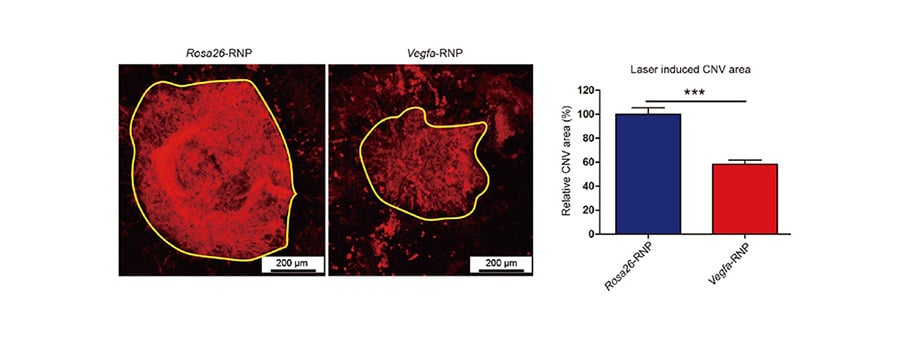Using Genome Surgery to Prevent Progression of AMD
Thursday, February 23 2017 | 00 h 00 min | Press Release, Vision Science
Scientists at the Center for Genome Engineering, within the Institute for Basic Science (IBS) in Korea report the use of CRISPR-Cas9 in performing “gene surgery” in the layer of tissue that supports the retina of living mice to treat AMD.
“The injections tackle the effects, but not the main cause of the problem. By editing the VEGF gene, we can achieve a longer-term cure,” explains KIM Jin-Soo, Director of the Center for Genome Engineering.
CRISPR-Cas9 can precisely cut and correct DNA at the desired site in the genome. The CRISPR-Cas9 system works by cutting DNA at a target site, in this case, inside the VEGF gene.
In this study, the research team successfully injected CRISPR-Cas9 into the eyes of a mice model with wet AMD and locally modified the VEGF gene.
The progression of the eye disease was monitored by looking at choroidal neovascularization (CNV), the creation of new blood vessels between the retina and the sclera – a common problem of ‘wet’ macular degeneration – and researchers found the CNV area reduced by 58%.
“We believe that this is a new therapeutic modality for the treatment of non-hereditary degenerative diseases,” points out Professor KIM Jeong Hun (Seoul National University), “We confirmed the effect on the animal models of the disease and now we wish to continue with preclinical trials.”
View the full press release here.






